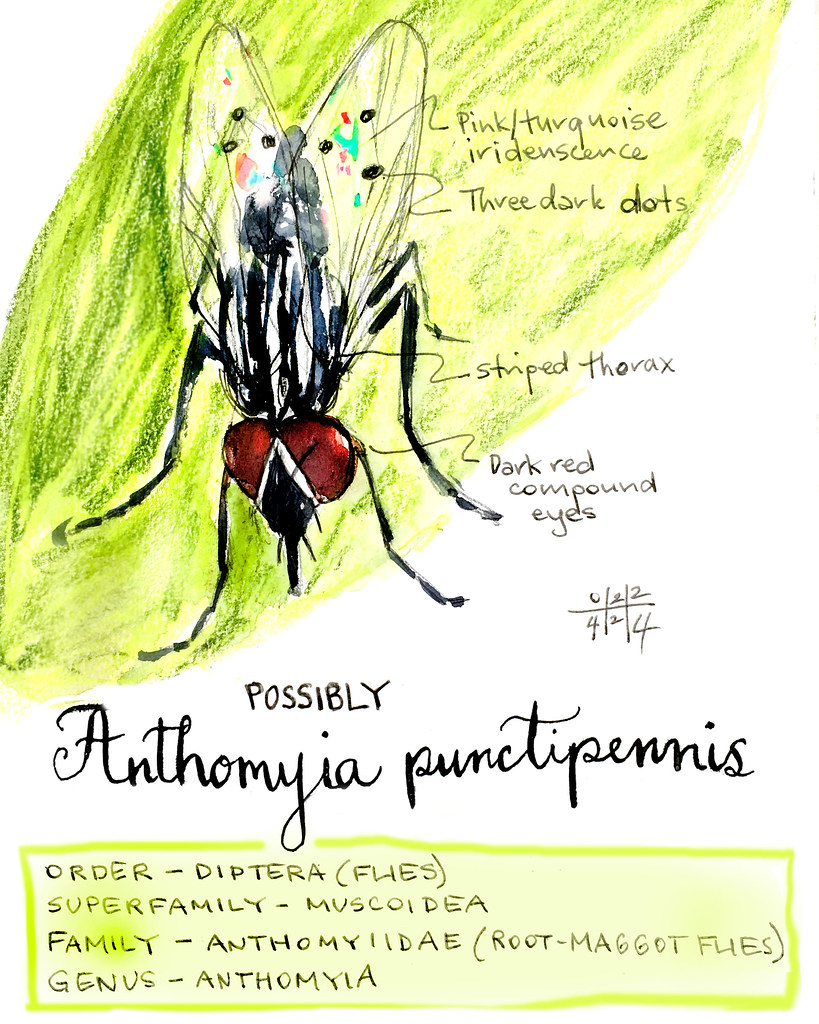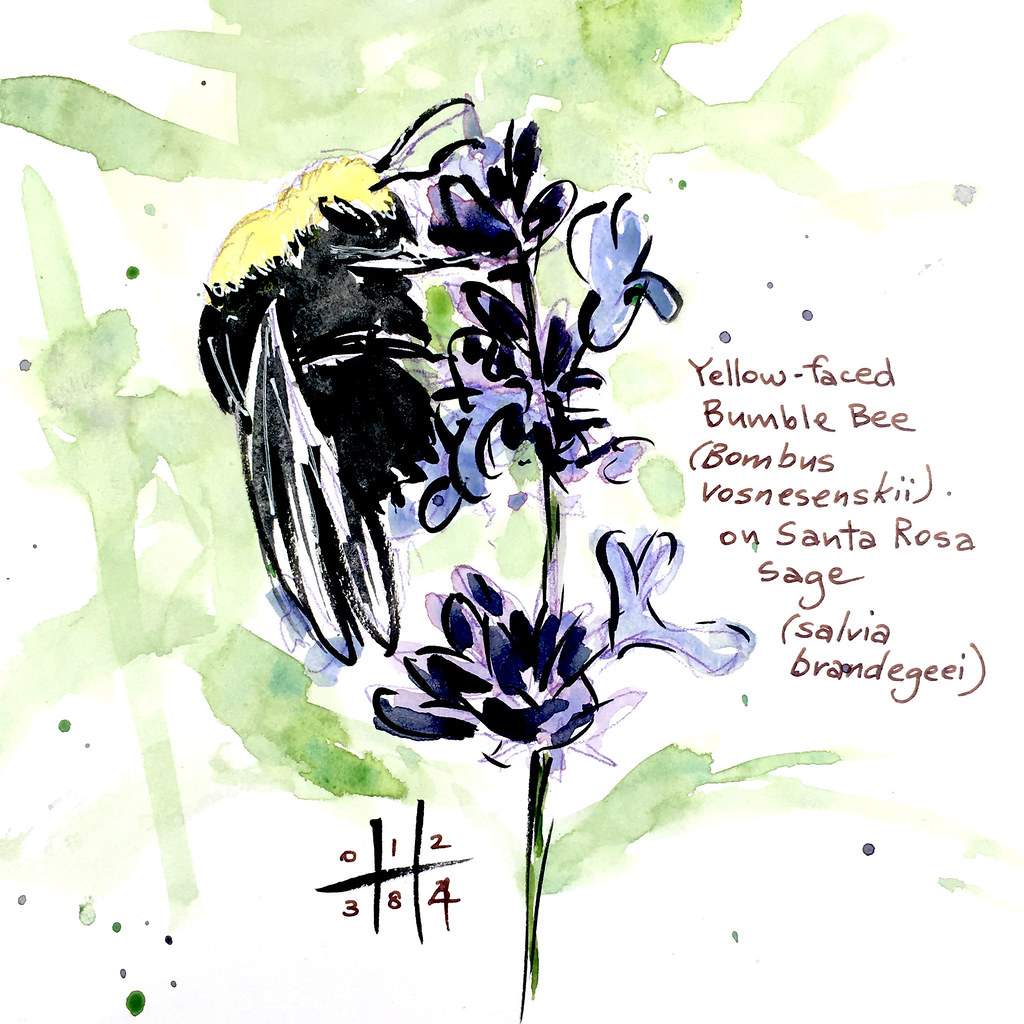
After picking sixty (60!) snails off our little orange tree this morning, I noticed this handsome fly on one of the ravaged leaves. I am no entomologist, so the ID could be wrong. Looking at the distribution map in iNaturalist, Anthomyia species are far more common in the Southern Hemisphere than the northern, so possibly I’m way off. I was attracted to the strong dark dots on the wings; I suspect that are a key feature for identification.









